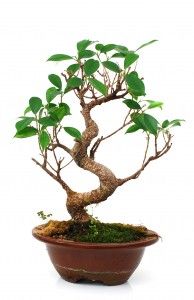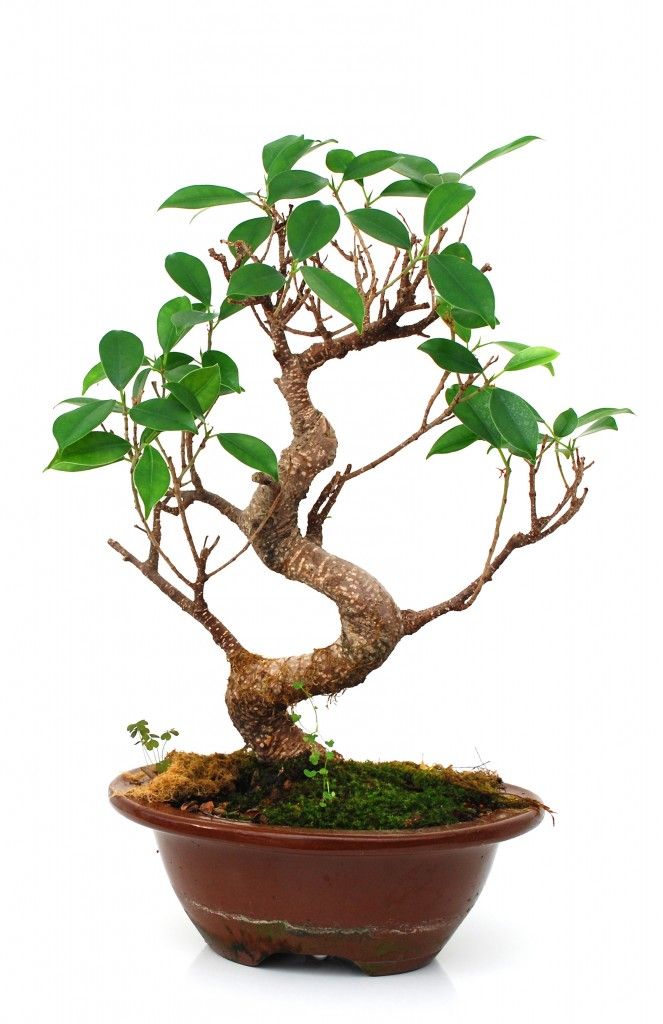 Ficus Benjamina, or Weeping Fig, are extremely popular for bonsai due to the beautiful umbrella-like canopy that can be produced with the thin branches that typically cascade downward from the weight of the leaves. In the wild, the roots of this tree are known to break concrete surfaces, wreaking havoc on defenseless roads and sidewalks. In the bonsai world, these roots provide great surface roots that attract the viewer’s eyes to the trunk of the specimen.
Ficus Benjamina, or Weeping Fig, are extremely popular for bonsai due to the beautiful umbrella-like canopy that can be produced with the thin branches that typically cascade downward from the weight of the leaves. In the wild, the roots of this tree are known to break concrete surfaces, wreaking havoc on defenseless roads and sidewalks. In the bonsai world, these roots provide great surface roots that attract the viewer’s eyes to the trunk of the specimen.
Watering Ficus Benjamina
This species typically needs to be watered more than others due to the amount of sunlight it receives. These trees can dry out very quickly if not watched carefully. You can use your finger to test how dry the soil is if you do not own a moisture meter. Another way to test for moisture is by feeling how heavy the plant is. A lighter plant than normal indicates that it needs to be watered.
Placement of your Ficus Benjamina
Benjamina Ficus thrive in well-lit locations, sheltered from direct midday sunlight. Place this tree in an area that gets a large amount of moisture, such as a kitchen. They tend to grow less leaves and look less lively if grown in dry areas of the house. Ensure that your miniature tree is not in a location that experiences cool drafts.
Training Ficus Benjamina
Pruning Ficus Benjamina encourages the tree to grow new shoots, so it is essential that you prune them regularly. In order to maintain shape, cut new growth back to the first two leaves after they have grown 5 or 6 leaves. You will have to perform maintenance pruning regularly to maintain shape and size, as this tree grows quickly.
Benjamina Ficus are great for formal upright, informal upright, cascade, semi-cascade, broom, and slanting styles. They are also well known for rock-over-root and clasped-to-rock plantings. These plants are commonly grown as bonsai and much larger house plants.
Repotting Ficus Benjamina
These trees should be repotted every year for the first few years to ensure they have plenty of support for vigorous growth. When repotting, it is important that you remove up to 30% of the surface roots to promote new growth. Ficus prefer well-draining soils, containing mostly sand and other arrogates.
Fertilizing Ficus Benjamina
Your Benjamina Ficus relies heavily on the nutrients you provide in your fertilizer. The nutrients in the soil will wash away quickly and must be reapplied through a good fertilizer. This species prefers a weekly feeding of balanced fertilizer, slowed down to every other week through the winter.
 |
 |
 |
